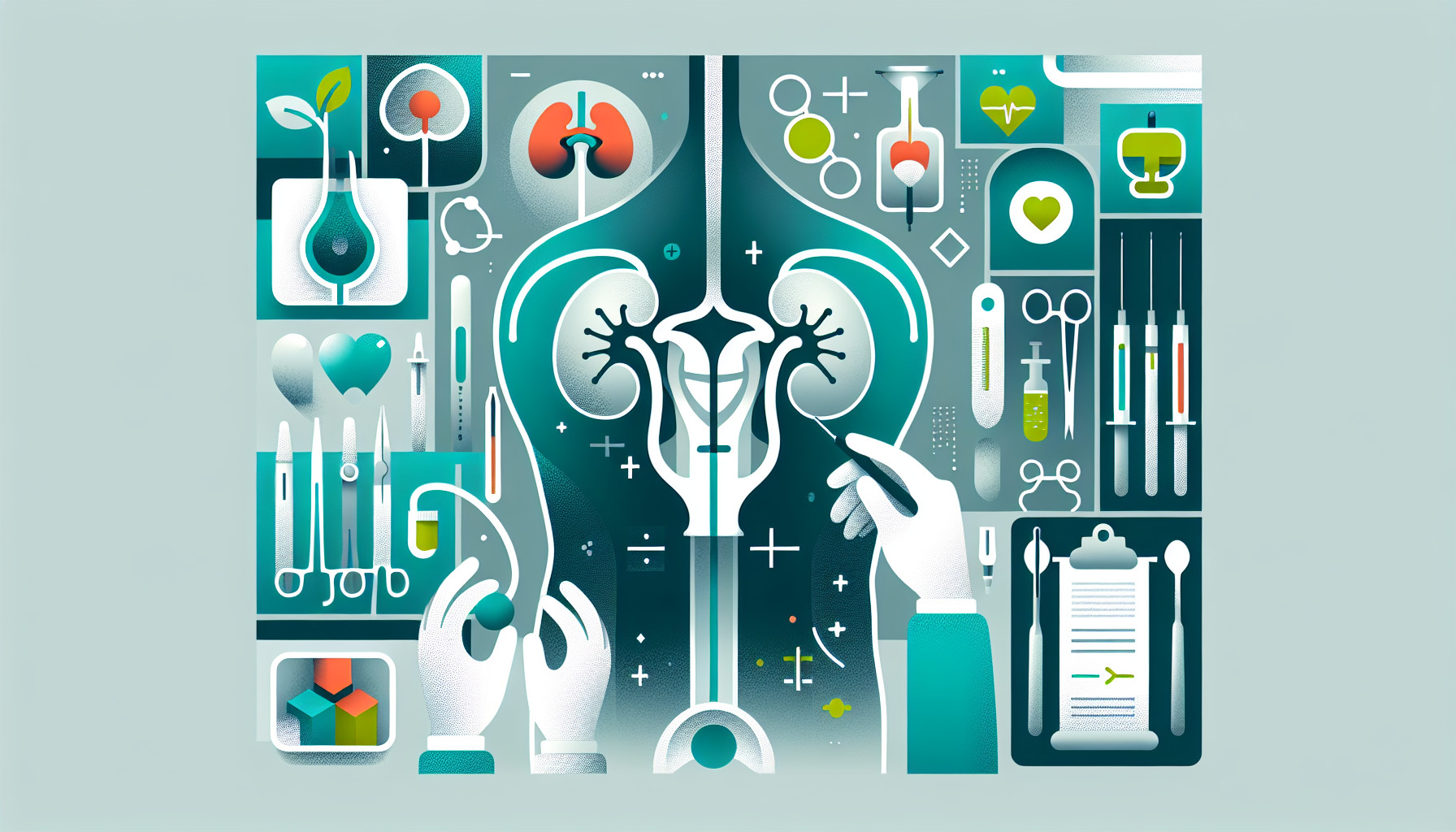Our Summary
This research paper compares two different surgical methods for urinary diversion in patients who have only one working kidney and who underwent a radical cystectomy (removal of the urinary bladder). The two methods are cutaneous ureterostomy and ileal conduit urinary diversion.
In simpler terms, both these methods help direct urine from the kidneys out of the body, but they do so in different ways: cutaneous ureterostomy attaches the tube that carries urine from the kidney (the ureter) to the skin surface, while ileal conduit uses a piece of the small intestine to create a new pathway for urine to pass out of the body.
The researchers looked at patient data from January 2014 to May 2019. They compared the patient outcomes, operation times, length of hospital stays, and kidney function for the two methods, and found that patients who underwent cutaneous ureterostomy had shorter operation times, shorter hospital stays, and fewer bowel-related complications.
However, while kidney function was similar for both groups at the start and up to one year after surgery, patients who underwent cutaneous ureterostomy showed a greater decline in kidney function after two years. This suggests that while cutaneous ureterostomy may have some short-term benefits, it might have a negative impact on long-term kidney function.
FAQs
- What are the two methods of urinary diversion compared in this research?
- What were the positive outcomes for patients who underwent cutaneous ureterostomy?
- What were the long-term effects on kidney function for patients who underwent cutaneous ureterostomy?
Doctor’s Tip
A helpful tip a doctor might tell a patient about ureterostomy is to carefully consider the long-term implications of the procedure on kidney function. It’s important to weigh the potential short-term benefits, such as shorter operation times and hospital stays, against the possibility of decreased kidney function in the future. Patients should discuss their concerns and goals with their healthcare team to make an informed decision about the best urinary diversion method for their individual needs. Regular follow-up appointments and monitoring of kidney function are also important to detect any changes early on and adjust treatment as needed.
Suitable For
Patients who are typically recommended for ureterostomy are those who have only one working kidney and have undergone a radical cystectomy, where the bladder has been removed. This could be due to conditions such as bladder cancer or other urinary tract disorders. Patients who are unable to undergo other types of urinary diversion procedures, such as ileal conduit, may also be recommended for ureterostomy. Additionally, patients who have a high risk of complications from other surgical methods or who have a need for a quicker recovery time may also be candidates for ureterostomy. However, it is important for healthcare providers to consider the potential long-term impact on kidney function when recommending this procedure.
Timeline
Before the ureterostomy surgery:
- Patients would have undergone a radical cystectomy, which is the removal of the urinary bladder.
- The patient’s medical history, kidney function, and overall health would have been assessed by medical professionals.
- The patient would have been informed about the surgery, the potential risks and benefits, and the recovery process.
After the ureterostomy surgery:
- The patient would have a tube (ureter) from the kidney attached to the skin surface to allow urine to pass out of the body.
- The patient would be monitored for any complications, such as infection, leakage, or bowel-related issues.
- The patient would receive post-operative care and instructions on how to care for the stoma and manage urinary function.
- Regular follow-up appointments would be scheduled to monitor kidney function and overall health.
Overall, the timeline for a patient before and after ureterostomy surgery involves thorough assessment, surgical procedure, recovery, and long-term monitoring to ensure optimal kidney function and overall well-being.
What to Ask Your Doctor
What are the potential risks and complications associated with cutaneous ureterostomy compared to ileal conduit urinary diversion?
How will my kidney function be monitored and what should I expect in terms of long-term kidney health with cutaneous ureterostomy?
What is the expected recovery time and post-operative care for cutaneous ureterostomy?
Are there any dietary or lifestyle changes I should make after undergoing cutaneous ureterostomy?
How often will I need to follow up with my doctor after the surgery and what signs should I look out for that may indicate a complication?
Are there any alternative urinary diversion methods that may be more suitable for my individual case?
How will cutaneous ureterostomy impact my daily activities and quality of life compared to ileal conduit urinary diversion?
What is the success rate of cutaneous ureterostomy in terms of managing urinary flow and preventing complications?
Are there any support groups or resources available for patients who have undergone cutaneous ureterostomy?
What are the specific criteria or factors that make someone a good candidate for cutaneous ureterostomy versus ileal conduit urinary diversion?
Reference
Authors: Saini S, Nayak B, Singh P, Singh P, Nayyar R, Kumar R, Seth A. Journal: Indian J Surg Oncol. 2022 Sep;13(3):641-646. doi: 10.1007/s13193-022-01544-4. Epub 2022 May 2. PMID: 36187545
